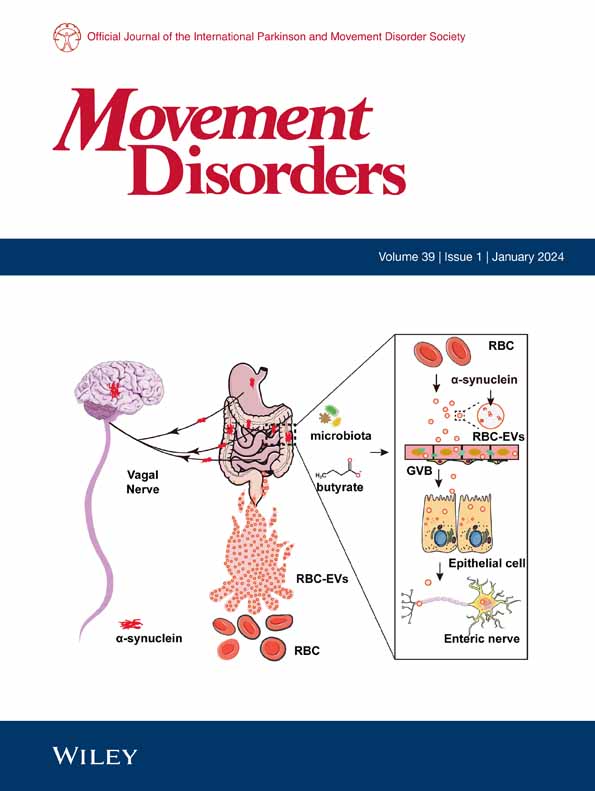Definition and Classification of Dystonia
IF 7.4
1区 医学
Q1 CLINICAL NEUROLOGY
引用次数: 0
Abstract
Dystonia is a movement disorder with varied clinical features and diverse etiologies. Here we present a revision of the 2013 consensus definition and classification of dystonia in light of subsequent publications and experience with its application during the last decade. A panel of movement disorder specialists with expertise in dystonia reviewed the original document and proposed some revision. There was broad consensus to retain the definition of dystonia with only minor clarifications to the wording. Dystonia is defined as a movement disorder characterized by sustained or intermittent abnormal movements, postures, or both. Dystonic movements and postures are typically patterned and repetitive and may be tremulous or jerky. They are often initiated or worsened by voluntary action and frequently associated with overflow movements. The two‐axis structure for classification of the many different presentations of dystonia was also retained, with some revision. Axis I summarizes key clinical characteristics of dystonia, including age at onset, family history, body distribution, temporal dimensions, phenomenology, and whether dystonia is isolated or combined with other neurological or medical problems. Axis II organizes information regarding its etiological basis, including genetic, acquired, and anatomical, and common disease mechanisms. This consensus provides an update to the original definition and classification of dystonia with the aim of facilitating its clinical recognition and management. The revision retains the essence of the original proposal and aims particularly to provide a structure facilitating a uniform implementation. © 2025 The Author(s).肌张力障碍的定义和分类
肌张力障碍是一种具有多种临床特征和多种病因的运动障碍。在这里,我们根据随后的出版物和过去十年的应用经验,对2013年共识的肌张力障碍定义和分类进行了修订。一组具有肌张力障碍专业知识的运动障碍专家审查了原始文件并提出了一些修改意见。广泛的共识是保留肌张力障碍的定义,仅对措辞进行少量澄清。肌张力障碍是一种运动障碍,其特征是持续或间歇的异常运动、姿势或两者兼而有之。肌张力障碍的动作和姿势是典型的模式和重复,可能是颤抖或抽搐。它们通常由自愿行为引起或恶化,并经常与溢出运动有关。对许多不同表现的肌张力障碍进行分类的两轴结构也被保留,并进行了一些修订。轴1总结了肌张力障碍的主要临床特征,包括发病年龄、家族史、身体分布、时间维度、现象学,以及肌张力障碍是孤立的还是与其他神经或医学问题合并。轴II组织有关其病因学基础的信息,包括遗传、获得性和解剖学以及常见疾病机制。这一共识为肌张力障碍的原始定义和分类提供了更新,旨在促进其临床识别和管理。修订保留了原建议的实质,其特别目的是提供一种便于统一执行的结构。©2025作者。Wiley期刊有限责任公司代表国际帕金森和运动障碍学会出版的《运动障碍》。
本文章由计算机程序翻译,如有差异,请以英文原文为准。
求助全文
约1分钟内获得全文
求助全文
来源期刊

Movement Disorders
医学-临床神经学
CiteScore
13.30
自引率
8.10%
发文量
371
审稿时长
12 months
期刊介绍:
Movement Disorders publishes a variety of content types including Reviews, Viewpoints, Full Length Articles, Historical Reports, Brief Reports, and Letters. The journal considers original manuscripts on topics related to the diagnosis, therapeutics, pharmacology, biochemistry, physiology, etiology, genetics, and epidemiology of movement disorders. Appropriate topics include Parkinsonism, Chorea, Tremors, Dystonia, Myoclonus, Tics, Tardive Dyskinesia, Spasticity, and Ataxia.
 求助内容:
求助内容: 应助结果提醒方式:
应助结果提醒方式:


